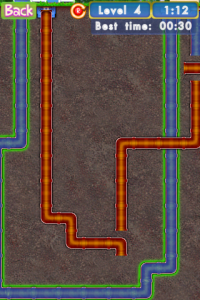


11 Taken collectively, they supply a snapshot of John's financial dealings in Ireland second in importance only to the Irish Pipe Roll for the year 1211-12 (14 John). They go unremarked, for example, in Goddard Henry Orpen's detailed history of Ireland under the Normans. These fines deserve more detailed treatment than they have previously been afforded. All told, nearly thirty individual transactions are detailed here, ranging from fines of 20 or 40 marks for the release of hostages, all the way up to far more substantial sums, such as the 1000 marks offered for four cantreds of land formerly held by the bishop of Norwich or the further 1000 marks offered for the wardship and marriage of the heir of Thomas fitz Maurice, son of Maurice fitz Gerald, himself one of the great figures of the conquest of Ireland fifty years before. 10 Various of these involved men, or the heirs of men who had first risen to prominence in Ireland during John's years as lord of Ireland, in the fifteen years prior to his accession as King in 1199. The Archbishop of Dublin, meanwhile, was sent a long list of memoranda and instructions, mostly involving debts owed by Irish landowners, or new fines to be negotiated, in several instances for the release of hostages or prisoners. Map of islands, including Ireland (Hybernia), in Gerald of Wales' Topography of Ireland, BL Arundel 14 f. The fine was to be paid within a year, supplying some indication of the King's craving for cash. 8 Amfredus, besides acting as go-between, was himself an active participant in the Irish land market, offering 100 marks for an Irish heiress (provided her childhood marriage could be dissolved), and during his time in England offering a further 500 marks for wardship of the lands and heirs of two further Irish barons, Richard de Tuith and Robert de Lacy. 7 The archdeacon, we can assume, was a refugee, now persona non grata in France as a result of his support for John's expedition of 1214. 6 Messages passed to Ireland via Amfredus de Dene and the archdeacon of Poitiers. 5 Others of the Irish kings were sent gifts of scarlet cloth. The King of Connaught and his men were promised peace for so long as they remained faithful.
#Piperoll 127 series
On 1-2 February, the King issued a whole series of instructions relating to his Irish lands, most of them transmitted to Henry of London, archbishop of Dublin, newly appointed as successor to John de Gray, bishop of Norwich, as the King's chief minister in the province. The most significant business recorded this week concerned Ireland. 3 On 1 February, Peter was granted letters of protection for himself, his men and his lands for so long as she should remain in service with horses and arms. Rumour still circulated that it was Peter, in 1202, who had carried out the murder of Arthur of Brittany, King John's young nephew: the event that more than any other had precipitated the loss of Normandy and hence the King's subsequent travails. 2 Peter de Maulay, Corfe's constable, was himself a figure of ill-omen, an alien from the Loire, exiled to England after the loss of John's northern French lands in 1204, and established by marriage as a major landholder in Yorkshire. 1 Earlier in the week, there had been a grant, by letters patent rather than by charter, of a weekly market to the men of Corfe, living in the shadow of John's great state prison, Corfe Castle.

Amongst them, it is worth noting the presence of Henry fitz Count, bastard son of the late earl of Cornwall: a would-be great man in his own right, but here listed seventh in the witness list, behind such relatively minor figures as Henry fitz Aucher or Peter Escudemore. The witnesses to this charter, headed by the constable of Marlborough, Hugh de Neville, suggest a court attended by a fairly humble collection of knights. There on 7 February he issued the week's only charter: a grant of a market and annual fair to Walter de Dunstanville, for his Wiltshire manor of Heytesbury. He then travelled north to Marlborough in Wiltshire. The King spent most of this week on the northern and western edges of Poole harbour, perhaps awaiting the arrival of mercenary reinforcements from France. Murder of Prince Arthur, attributed to Thomas Welly (1754?)


 0 kommentar(er)
0 kommentar(er)
